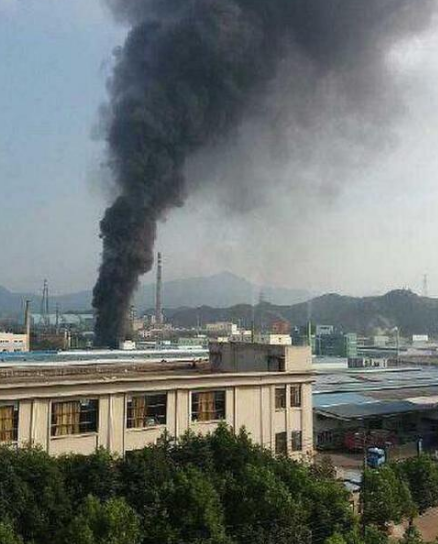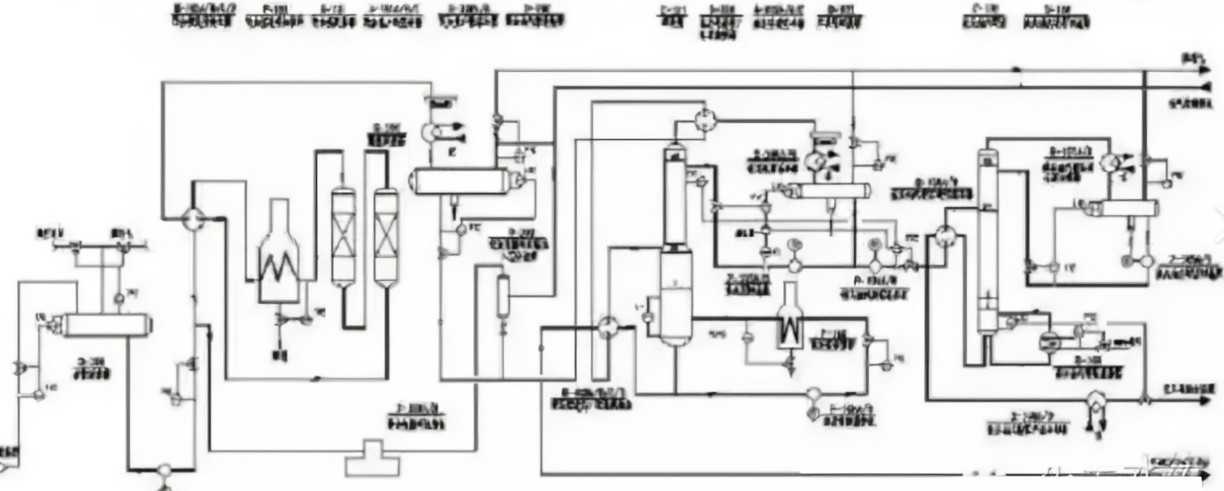Achieving the carbon peak target
Implement the carbon peak action plan.Promote the research and development and application of green and low-carbon technologies, build a green manufacturing and service system, and promote energy conservation and carbon reduction in steel, nonferrous metals, petrochemical, chemical, building materials and other industries.
Since last year, the National Development and Reform Commission and other departments have issued many policies for the transformation of high energy-consuming enterprises.The recent Guidelines for the Implementation of Energy Saving and Carbon Reduction in Key Areas of High Energy-consuming Industries (2022 Edition) (hereinafter referred to as the Guidelines) has also pointed out the specific path for energy saving and carbon reduction in the industry.
In October 2021, the National Development and Reform Commission issued Several Opinions on Strict Energy Efficiency Constraints to Promote Energy Saving and Carbon Reduction in Key Areas (Fagai Industry (2021) No. 1464, hereinafter referred to as the Opinions), among which the Opinions on Strict Energy Efficiency Constraints to Promote Energy Saving and Carbon Reduction in Key Petrochemical Industries (2021-2025) was issued specifically for the petrochemical industry, proposing that by 2025, through the implementation of energy saving and carbon reduction actions, the proportion of production capacity in oil refining, ethylene, synthetic ammonia and carbide industries reaching the benchmark level will exceed 30%.

The Opinions also proposed to guide the orderly exit of inefficient production capacity.Strictly implement the Guidance Catalogue for Industrial Structure Adjustment and other regulations, and increase the disposal of idle and zombie production capacity. In order to implement the Opinions, in November last year, the National Development and Reform Commission and other five departments jointly issued the Notice on the Issuance of the Benchmark Level and Benchmark Level of Energy Efficiency in Key Areas of High Energy Consumption Industry (2021 Edition) (Fagai Industry (2021) No. 1609, hereinafter referred to as the Notice), which clarified the benchmark level and benchmark level of energy efficiency in key areas of high energy consumption industry.It put forward four requirements, including highlighting the leading role of standards, promoting the improvement of project efficiency by classification, upgrading and eliminating batch transformation and upgrading within a certain period, and improving relevant supporting policies. On this basis, in February this year, the National Development and Reform Commission and other four departments jointly issued the Guide, which clarified the work direction and objectives of energy saving and carbon reduction transformation and upgrading in 17 high energy consumption industries, such as oil refining, modern coal chemical industry, steel, non-ferrous metal smelting, cement, etc., aiming to guide all relevant parties to carry out energy saving and carbon reduction transformation and upgrading in key areas in a scientific and orderly manner.These include oil refining, ethylene, p-xylene, coal to methanol, coal to olefin, coal to ethylene glycol, synthetic ammonia, carbide, caustic soda, soda, ammonium phosphate, yellow phosphorus and other petrochemical industries.
The reporter saw that in order to better promote the transformation and upgrading of energy saving and carbon reduction in key areas, the Guide put forward four tasks, which generally pointed out the direction for the implementation of energy saving and carbon reduction transformation.

Guide the transformation and upgrading. For enterprises with energy efficiency below the benchmark level, especially below the benchmark level, actively promote the advanced technologies and equipment proposed in this Guide, the Green Technology Promotion Catalogue, the Industrial Energy-saving Technology Recommendation Catalogue, the "Energy Efficiency Star" Equipment Product Catalogue, strengthen energy system optimization, waste heat and pressure utilization, pollutant emission reduction, solid waste comprehensive utilization and public and auxiliary facilities transformation, improve the green level of production processes and technical equipment, improve the efficiency of resource and energy utilization, and promote the formation of a strong domestic market. Strengthen technological research.Make full use of innovative resources from colleges and universities, research institutes, industry associations and other units, and promote the research of green generic key technologies, leading technologies and related facilities and equipment for energy conservation, pollution reduction and carbon reduction to synergize efficiency.Promote backbone enterprises with energy efficiency that have reached or approached the benchmark level to plan and build demonstration projects with advanced and cutting-edge technologies and equipment, and lead the high-quality development of the industry. Promote agglomeration development. Guide backbone enterprises to give full play to their advantages in capital, talent and technology, and voluntarily and independently carry out mergers and reorganizations in their own fields through the selection of the best and the elimination of the worst, and capacity replacement. Concentrate on the planning and construction of large-scale and integrated production bases, improve the level of process equipment and energy efficiency, and build a development pattern with a reasonable structure, effective competition, and orderly regulation. It is not allowed to blindly expand production capacity and low-level repeated construction in the name of mergers and reorganizations.

Accelerate the elimination of backwardness.Strictly implement relevant laws and regulations on energy conservation, environmental protection, quality and safety technology and the Guidance Catalogue for Industrial Structure Adjustment and other policies, and eliminate backward process technology and production equipment that do not meet the requirements of green and low-carbon transformation development in accordance with the law.For production capacity with energy efficiency below the benchmark level and difficult to upgrade to above the benchmark level within the prescribed time limit, promote its exit through market-oriented and law-based means.
Shortly after the release of the Guide, the Industrial Department of the National Development and Reform Commission and the Energy Conservation Department of the Ministry of Industry and Information Technology organized a training session on energy conservation and carbon reduction in key areas by video.More than 20,000 people from relevant government departments at all levels and enterprises in relevant fields attended the training online.

At the meeting, the leading comrades from the Industrial Department of the National Development and Reform Commission put forward specific requirements for the next step. First, we urged provincial development and reform commissions to formulate overall implementation plans for energy conservation and carbon reduction in key areas in their regions, and organize the transformation and upgrading of their regions in a scientific and orderly manner. Second, we asked relevant industry associations to play a business link role and play a technical consulting advantage, pay close attention to and timely reflect the development of cutting-edge technologies and the progress of transformation and upgrading in the industry, and guide enterprises to adopt advanced technology and equipment to accelerate green and low-carbon transformation. Third, we asked enterprises in all fields to formulate specific work plans in line with the actual situation of enterprises in accordance with the policy requirements, and strive to complete the transformation and upgrading within 2-3 years, improve the energy efficiency level and market competitiveness of enterprises, and provide strong support for the industry to achieve the carbon peak as scheduled.
- EMERSON
- Honeywell
- CTI
- Rolls-Royce
- General Electric
- Woodward
- Yaskawa
- xYCOM
- Motorola
- Siemens
- Rockwell
- ABB
- B&R
- HIMA
- Construction site
- electricity
- Automobile market
- PLC
- DCS
- Motor drivers
- VSD
- Implications
- cement
- CO2
- CEM
- methane
- Artificial intelligence
- Titanic
- Solar energy
- Hydrogen fuel cell
- Hydrogen and fuel cells
- Hydrogen and oxygen fuel cells
- tyre
- Chemical fiber
- dynamo
- corpuscle
- Pulp and paper
- printing
- fossil
- FANUC
- Food and beverage
- Life science
- Sewage treatment
- Personal care
- electricity
- boats
- infrastructure
- Automobile industry
- metallurgy
- Nuclear power generation
- Geothermal power generation
- Water and wastewater
- Infrastructure construction
- Mine hazard
- steel
- papermaking
- Natural gas industry
- Infrastructure construction
- Power and energy
- Rubber and plastic
- Renewable energy
- pharmacy
- mining
- Plastic industry
- Schneider
- Kongsberg
- NI
- Wind energy
- International petroleum
- International new energy network
- gas
- WATLOW
- ProSoft
- SEW
- wind
- ADVANCED
- Reliance
- YOKOGAWA
- TRICONEX
- FOXBORO
- METSO
- MAN
- Advantest
- ADVANCED
- ALSTOM
- Control Wave
- AB
- AMAT
- STUDER
- KONGSBERG
- MOTOROLA
- DANAHER MOTION
- Bently
- Galil
- EATON
- MOLEX
- Triconex
- DEIF
- B&W
- ZYGO
- Aerotech
- DANFOSS
- KOLLMORGEN
- Beijer
- Endress+Hauser
- MOOG
- KB
- Moxa
- Rexroth
- YAMAHA
- Johnson
- Westinghouse
- WAGO
- TOSHIBA
- TEKTRONIX


Email:wang@kongjiangauto.com



































































































































